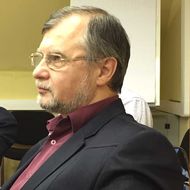- A
- A
- A
- ABC
- ABC
- ABC
- А
- А
- А
- А
- А
- HSE University
- Faculties
- Faculty of Social Sciences
- School of Political Science
- News
- Andrey Medushevskiy: The modernization in Russia and China: similarity and differences
3 Krivokolenny Pereulok, Moscow, 103070.
Phones:
8 (495) 772-95-90 *22833,
8 (495) 772-95-90 *22448
Fax: 8 (495) 772-95-90 *12556
Email: politfac@hse.ru
Washington: Free Russia, 2018.
Petrov N., Hale H. E., Lipman M.
Russian Politics. 2019. Vol. 4. No. 2. P. 168-195.
Arbatli E.
In bk.: Oxford Research Encyclopedia of Politics (Living Edition). Oxford University Press. P. 1-20.
Sorokina A., Maximenkova M., Kasamara V.
Political Science. PS. Высшая школа экономики, 2019. No. 71.

Andrey Medushevskiy: The modernization in Russia and China: similarity and differences
Comparative studies of modernization in Russia and China involves the broader spectrum of argumentation over relationships between positive law, ethical principles and historical tradition, and of their reciprocal relations and practical implementations. A number of problems have become particularly relevant to current transformation of both countries. These include: a conflict between law and fairness within the legal architecture of post-Soviet reality (current debates over issues of continuity and discontinuity of Communist and Post-Communist legal tradition); tradition versus norm (issues of conflict of the market economy principle with the principles of equality and human dignity in the context of privatization, newly formed property relations and traditionally stereotypical mindsets).
One of the key issues is solidarity and supremacy in transitional society: national identity and government structure (the impact of current debates about the nation and national identity on the solution of problems of sovereignty, citizenship, federalism); law and power: a form of government and a type of political regime (debates over the conformity of the constitutional framework for human rights, forms of government and the type of political regime with the principles of fairness and proportionality; and the analysis of existing ideological trends and information manipulative techniques in the transformation of constitutional values and norms); the cyclic nature of post-Soviet constitutional development as a manifestation of conflict between the legal consciousness of people (perceptions of justice) and positive law (which at best provides a "moral minimum").
The comparative approach has allowed us to interpret constitutionalism in both countries as an integral historical phenomenon of modern and recent times. Transitional constitutionalism is specifically characterized by contradictions inherent in modernization process. These are contradictions between open and closed types of society; the law and the necessity of rapid social changes; between the newly established institutions and the consolidation of power needed for reform regulation; and lastly, between the classical West European models of constitutional development and the indigenous forms of political development inspired by Orthodox, Confucian, Communist ethics or their different combinations..
To be clearer in interpretation of emerging gaps between the notion and reality, it was important to find a terminology for transitional process. Hence, we describe real constitutionalism and nominal constitutionalism as two polar opposites divided by a changing space of conflicting interests and development. Nominal constitutionalism can be defined as a system where the constitutional norm is not effective at all. The nominal constitution (as it was in totalitarian Soviet Russia and Maoist China) legalizes an unlimited power, a dictatorship, which is per se unconstitutional. Nominal constitutionalism as existed in Communist China till now embodies new principles of legitimacy (the sovereignty of people or classes) but establishes the dictatorship of a party in power.
The dialectics of nominal and limited (or sham) constitutionalism makes it possible to better understand the logic of Chinese and Russian political system development on the current stage. In both countries modernization involves transition from totalitarianism to authoritarianism. Sham constitutionalism might be defined as a controversial step toward real legal transformation - the system of limited constitutionalism where political decision making is withdrawn from the sphere of constitutional control. This is accomplished through: conferring vast legal powers on the head of state; maintaining flaws or lacunas in the constitution; and consequently: adjusting these flaws or omissions depending on the actual balance of social and political forces. As an alternative option, there may be established a new form of authoritarianism.
In contrast to quasi-constitutional Chinese legal evolution of the Post-Maoist period, the 1993 Russian Constitution became a turning point in the movement towards civil society and law-based state, which marked the beginning of transition from nominal constitutionalism to real one. The historical role and, in a way, teleology of the Russian constitution should be recognized as its distinguishing feature. But the constitution was drafted and delegated under the stiff confrontation of the old regime forces with the nascent new regime. The constitution’s authoritarian nature and way of adoption were referred to as forced measures against the conservative supporters of the old regime restoration. In Russia, this situation emerged in the wake of elimination of the dualism of parliament and president, creation of a new party in power, neutralization of public organizations and opposition. Further legal deformations appeared as a result of the public law policy which was conducted in the last years in order to built a system of limited pluralism and authoritarian modernization. The prolongation of these tendencies means the blockade of main constitutional principles in terms of political stagnation and bureaucratization of the system.
A comparative study into Post-Soviet legal modernization allows us to make a number of general recommendations: to destroy the artificial barriers between society and the state, create a system of inter-connections between citizens and political power by using constitutional institutes and procedures in their proper sense and by protecting and developing new forms of democratic civil activities. For the achievement of this goal it is recommended to use the purpose-oriented legal regulation, institutional reforms and especially the enforcement of the independence of judicial power, strict juridical definition and limitation of informal prerogatives of administration, creation of the administrative justice. That means the abolition of the whole system of deformations in the implementation of fundamental constitutional principles.
(See more: Medushevskiy A.N. Key problems of the Russian Modernization. Moscow-Berlin, Direct-MEDIA, 2014).
- About
- About
- Key Figures & Facts
- Sustainability at HSE University
- Faculties & Departments
- International Partnerships
- Faculty & Staff
- HSE Buildings
- HSE University for Persons with Disabilities
- Public Enquiries
- Studies
- Admissions
- Programme Catalogue
- Undergraduate
- Graduate
- Exchange Programmes
- Summer Schools
- Semester in Moscow
- Business Internship
- © HSE University 1993–2025 Contacts Copyright Privacy Policy Site Map
- Edit

